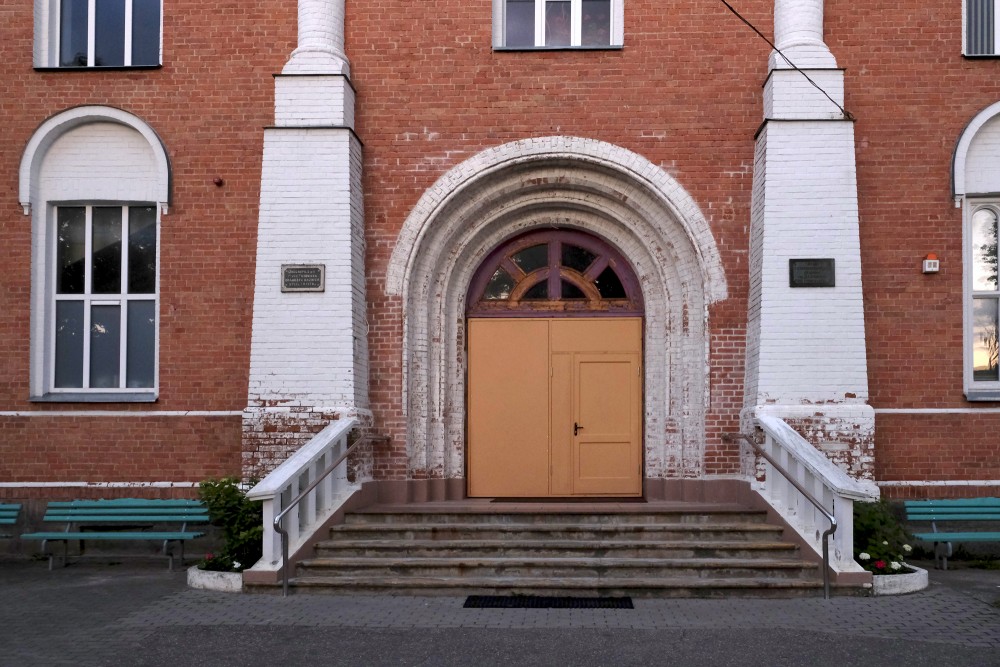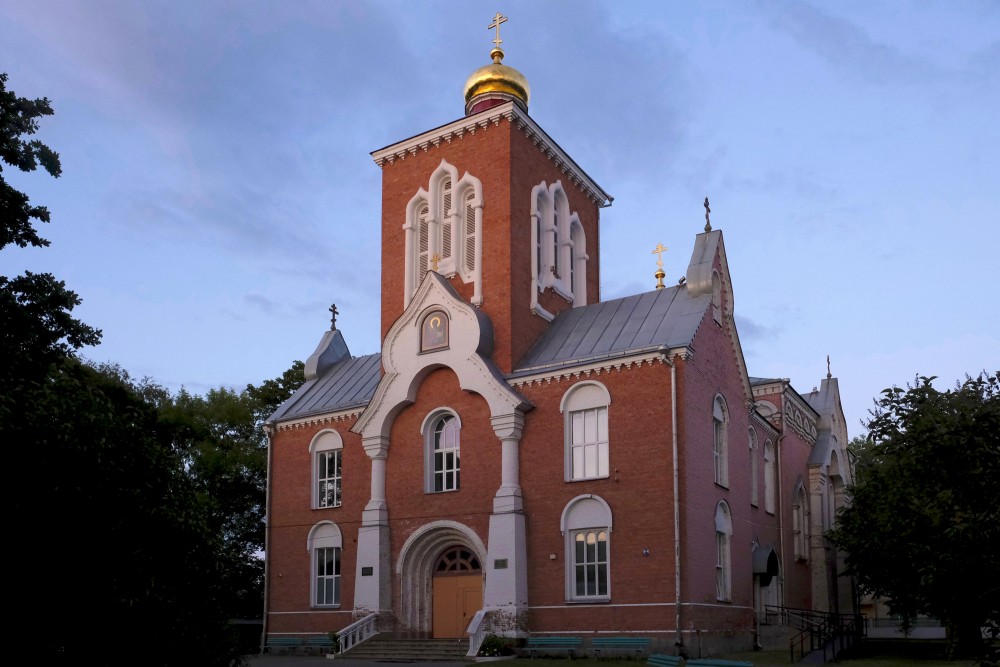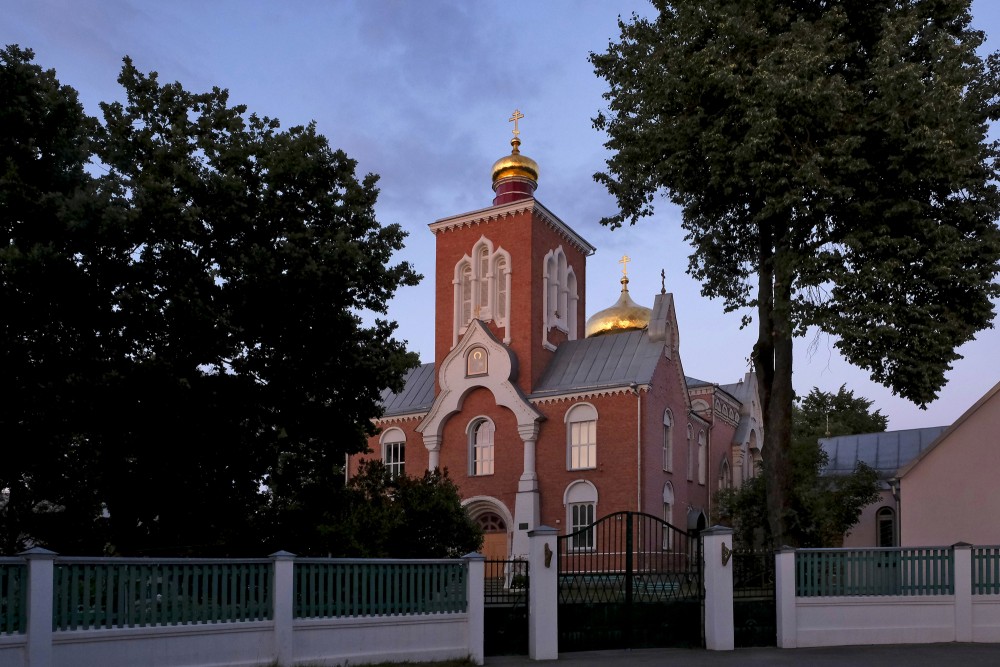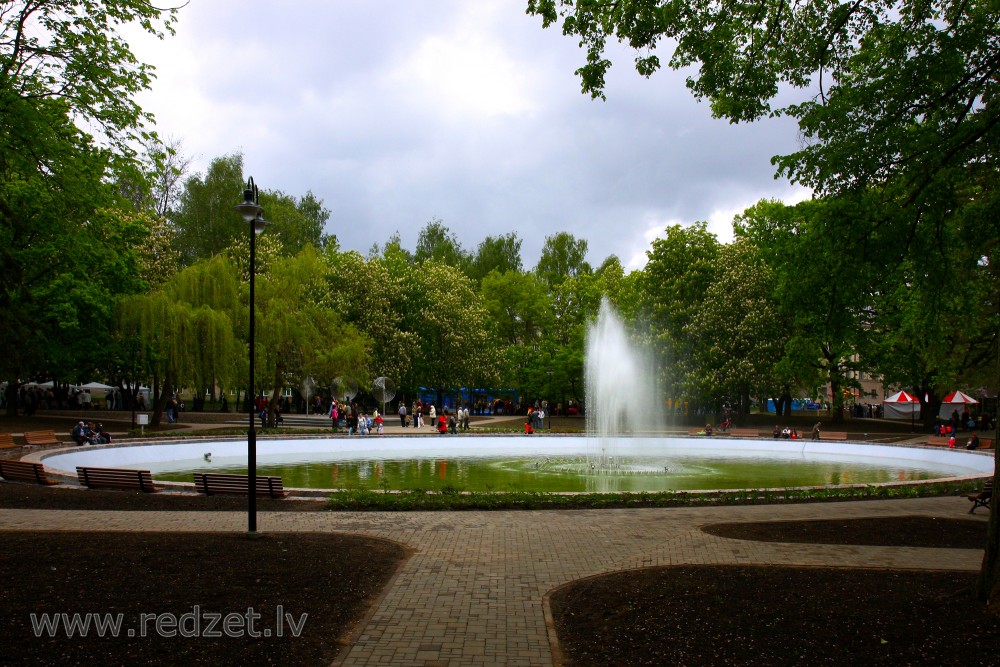Daugavpils City, Latvia
Daugavpils (see also other names) is a state city in south-eastern Latvia, located on the banks of the Daugava River, from which the city gets its name. The parts of the city north of the river belong to the historical Latvian region of Latgale, and those to the south lie in Selonia. It is the second-largest city in the country after the capital Riga, which is located some 230 kilometres (143 miles) to its north-west.
Daugavpils is located relatively close to Belarus and Lithuania (distances of 33 km (21 mi) and 25 km (16 mi) respectively), and some 120 km (75 mi) from the Latvian border with Russia. Daugavpils is a major railway junction and industrial centre and was an historically important garrison city lying approximately midway between Riga and Minsk, and between Warsaw and Saint Petersburg.
Daugavpils, then Dyneburg, was the capital of Polish Livonia while in Polish–Lithuanian Commonwealth. Following the first partition of Poland in 1772, the city became part of the Russian Empire. Since the Second World War, it has maintained an overwhelmingly Russian-speaking population, with Latvians and Poles being significant minorities. Historically, German and Yiddish were additional prominent native languages.
| Daugavpils | |
| State city | |
| Country | Latvia |
| Established | 1275 |
| Town rights | 1582 |
| Area | |
| • State city | 72.37 km2 (27.94 sq mi) |
| • Land | 63.38 km2 (24.47 sq mi) |
| • Water | 8.99 km2 (3.47 sq mi) |
| Highest elevation | 139 m (456 ft) |
| Lowest elevation | 86 m (282 ft) |
| Population (2023) | |
| • State city | 78,850 |
| • Density | 1,100/km2 (2,800/sq mi) |
| Postal code | LV-54(01–65) |
| Calling code | (+371) 654 |
| Website | www.daugavpils.lv |
Names
In the Latvian language, the current name Daugavpils references Daugava and the Latvian word pils (meaning "castle" - cognate with Lithuanian pilis, with Greek polis and with Old Prussian pils).
Historically, several names in various languages have identified Daugavpils. Some are still in use today.
- Belarusian: Даўґаўпілс (Daŭgaŭpils); historically Дзвінск (Dzvinsk), Дынабурґ (Dynaburg)
- German: Dünaburg
- Estonian: Düünaburg, Väinalinn
- Finnish: Väinänlinna
- French: Dunebourg, Dimmebourg
- Latgalian: Daugpiļs, [ˈdaʊkʲpʲilʲsʲ]
- Lithuanian: Daugpilis
- Polish: Dzwińsk, Dyneburg
- Russian: Даугавпилс; historically: Невгин (Nevgin), Динабург (Dinaburg), Борисоглебск (Borisoglebsk), Двинск (Dvinsk)
- Yiddish: דענענבורג (Denenburg), דינאַבורג (Dinaburg), דווינסק (Dvinsk)
Chronology of name changes
- Dünaburg (1275–1656)
- Borisoglebov (1656–1667)
- Dünaburg (1667–1893)
- Dvinsk (1893–1920)
- Daugavpils (since 1920)
The town's history began in 1275 when the Livonian Order, led by Ernst von Ratzeburg, built Dünaburg Castle 20 km (12 mi) up the Daugava river from where Daugavpils is now situated. In 1561 it became part of the Grand Duchy of Lithuania and, subsequently, of the Polish–Lithuanian Commonwealth in 1569 (see Duchy of Livonia). In 1621 Daugavpils became the capital of the newly formed Inflanty Voivodeship, which existed until the First Partition of Poland (1772). In 1577 the Russian tsar Ivan the Terrible captured and destroyed Dünaburg castle.
That same year, a new castle and a town were built 20 km (12 mi) downriver, by the Polish King Stephen Báthory. In 1582 Daugavpils was granted Magdeburg town rights. In 1654, Russia invaded Polish-Lithuanian Commonwealth, seizing much of the eastern lands. Russian troops besieged Daugavpils in April and May 1655, but did not capture the city; it was only taken by Swedish troops on July 11, 1655, who invaded Poland at that time. When the Russo-Swedish war started, the Russians captured Daugavpils on 10 August 1656, renamed the town Borisoglebov and controlled the region for 11 years, between 1656 and 1667. Russia returned the area of Latgale to Polish–Lithuanian Commonwealth following the Treaty of Andrusovo (1667). Called Dyneburg, the city became the capital of the Inflanty Voivodeship, also known as the Duchy of Livonia, and the starostwo of Dyneburg. It was a place of local sejmik's gatherings. Roman Catholic Bishop of Inflanty, who was always residing outside of diocese, moved his seat to Dyneburg at the end of 17th century. At the end of the 18th century, 540 people lived in the city itself, but if you add the population of the suburbs, the number was 1,373.
It became part of the Russian Empire after the First Partition of Poland in 1772. It was the uyezd administrative center as part of the Pskov Governorate (1772-1776), Polotsk (1776-1796), Belarusian (1796-1802), and finally Vitebsk (1802-1917), first as Dinaburg, then Dvinsk later during Russian rule.
From 1784 onwards the city had a large and active Jewish population among them a number of prominent figures. According to the Russian census of 1897, out of a total population of 69,700, Jews numbered 32,400 (ca. 44% percent).
As part of the Russian Empire, the city was called Dvinsk from 1893 to 1920. The newly independent Latvian state renamed it Daugavpils in 1920. Latvians, Poles and Soviet troops fought the Battle of Daugavpils in the area from 1919 to 1920. Daugavpils and the whole of Latvia was under Soviet rule between 1940–41 and 1944–1991. Nazi Brandenburgers led the German attack against the town in 1941, speaking Russian and wearing Soviet uniforms, and Germany occupied it between 1941 and 1944. The Nazis established the Daugavpils Ghetto where the town's Jews were forced to live. Most were murdered. During the Cold War the Lociki air-base operated 12 km (7 mi) northeast of Daugavpils itself. In the late Soviet era, there was a proposal to build a hydroelectric power station on the Daugava river that was successfully opposed by the nascent environmental movement in Latvia.
On 16 April 2010 an assassin shot vice-mayor Grigorijs Ņemcovs in the center of the city. He died almost immediately and the crime remains unsolved.
en.wikipedia.org


























